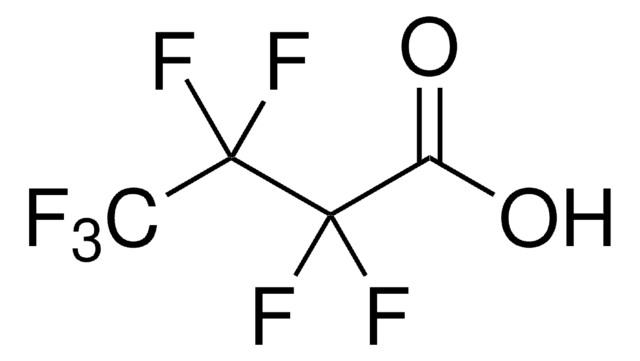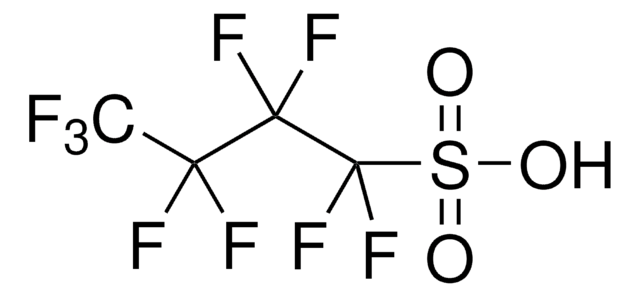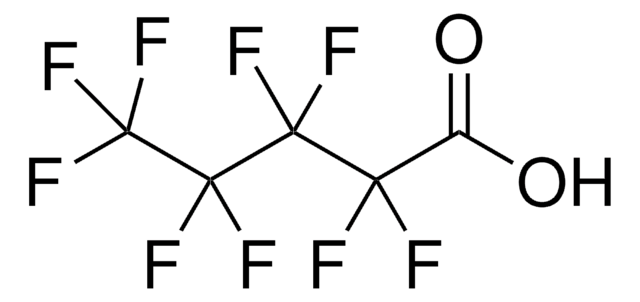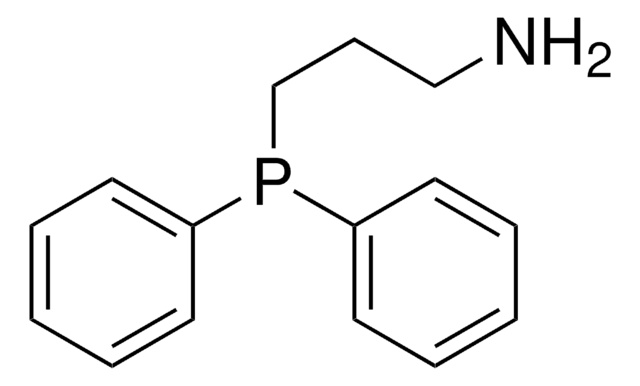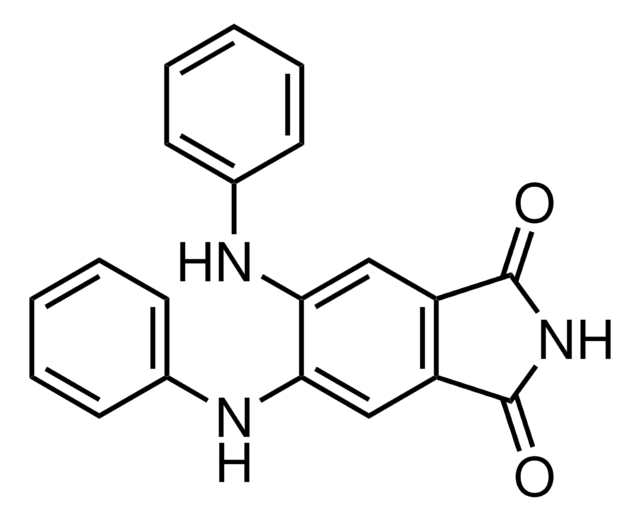52411
Heptafluorobutyric acid
suitable for ion chromatography, ≥99.5% (GC)
Sinónimos:
Edman Reagent No. 3, HFBA, Perfluorobutyric acid
About This Item
Productos recomendados
densidad de vapor
7 (vs air)
Nivel de calidad
presión de vapor
~10 mmHg ( 25 °C)
descripción
anionic
Ensayo
≥99.5% (GC)
Formulario
liquid
caducidad
limited shelf life, expiry date on the label
técnicas
ion chromatography: suitable
índice de refracción
n20/D 1.3 (lit.)
bp
120 °C/755 mmHg (lit.)
densidad
1.645 g/mL at 25 °C (lit.)
trazas de catión
Al: ≤0.5 mg/kg
Ba: ≤0.01 mg/kg
Bi: ≤0.01 mg/kg
Ca: ≤2 mg/kg
Cd: ≤0.01 mg/kg
Co: ≤0.01 mg/kg
Cr: ≤0.01 mg/kg
Cu: ≤0.01 mg/kg
Fe: ≤0.1 mg/kg
K: ≤0.5 mg/kg
Li: ≤0.01 mg/kg
Mg: ≤1 mg/kg
Mn: ≤0.01 mg/kg
Mo: ≤0.01 mg/kg
Na: ≤3 mg/kg
Ni: ≤0.01 mg/kg
Pb: ≤0.01 mg/kg
Sr: ≤0.01 mg/kg
Zn: ≤0.05 mg/kg
cadena SMILES
OC(=O)C(F)(F)C(F)(F)C(F)(F)F
InChI
1S/C4HF7O2/c5-2(6,1(12)13)3(7,8)4(9,10)11/h(H,12,13)
Clave InChI
YPJUNDFVDDCYIH-UHFFFAOYSA-N
¿Está buscando productos similares? Visita Guía de comparación de productos
Aplicación
Ligadura / enlace
Producto relacionado
Palabra de señalización
Danger
Frases de peligro
Clasificaciones de peligro
Skin Corr. 1A
Código de clase de almacenamiento
8A - Combustible corrosive hazardous materials
Clase de riesgo para el agua (WGK)
WGK 3
Punto de inflamabilidad (°F)
Not applicable
Punto de inflamabilidad (°C)
Not applicable
Equipo de protección personal
Faceshields, Gloves, Goggles, type ABEK (EN14387) respirator filter
Elija entre una de las versiones más recientes:
¿Ya tiene este producto?
Encuentre la documentación para los productos que ha comprado recientemente en la Biblioteca de documentos.
Los clientes también vieron
Nuestro equipo de científicos tiene experiencia en todas las áreas de investigación: Ciencias de la vida, Ciencia de los materiales, Síntesis química, Cromatografía, Analítica y muchas otras.
Póngase en contacto con el Servicio técnico